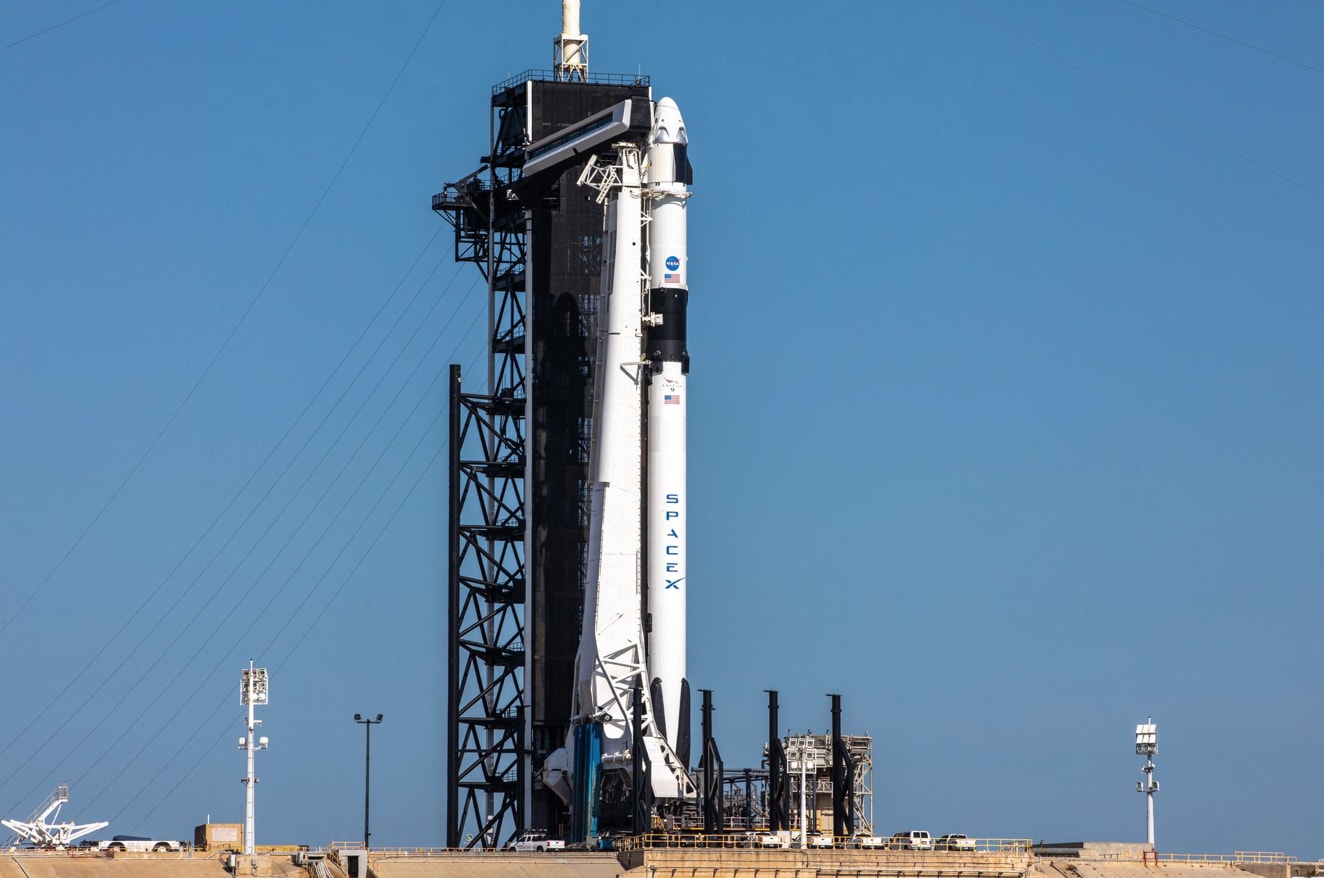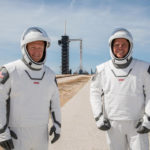

There have been so many rocket launches from Cape Canaveral in recent years that drew little public attention, except from those people lucky enough to be looking cape-ward as mighty United Launch Alliance Atlas and Delta rockets and SpaceX Falcon 9 rockets blasted into space.
Communications satellites, cargo for the International Space Station, top-secret military payloads, undisclosed private devices being trucked into lower-Earth orbit.
Meh.
Wednesday’s planned Falcon 9 launch will be different. For the first time in nearly nine years, human astronauts will go from Florida to space, in a test mission that has far more riding on it than two NASA astronauts, Doug Hurley and Bob Behnken.
After the space shuttle Columbia broke up over Texas the morning of Feb. 1, 2003, killing seven astronauts, America’s space ambitions and NASA’s plans crashed too. The result of numerous investigations, starting with the Columbia Accident Investigation Board, were the obvious conclusion that the shuttles had to be retired. When the last one, Atlantis, went up on July 8, 2011, it was actually a year later than the experts had recommended.
The question was: What would replace them? How would NASA, and America, continue in space?
The answer, at least for lower Earth orbit ventures and possibly for missions to the moon and beyond, stands ready to launch on Kennedy Space Center’s Launch Complex 39A Wednesday morning: the Falcon 9 rocket, with SpaceX’s Crew Capsule on top.
It is set to blast off at 4:33 p.m. Wednesday, taking Hurley and Behnken to the International Space Station and America into a new era of space commerce.
The test of the Crew Capsule is about much more than ferrying astronauts to and from the space station.
The resurgence of new American space ambitions and plans will be onboard.
The primary mission was described over time as turning over lower-Earth orbit transportation to American industry, so that NASA could focus on deep-space missions.
Yet there also has been increasing speculation of the agency using SpaceX’s, and other companies’, rockets and capsule for deeper space missions, starting with the moon. That prospect is getting more attention lately because of the increasing likelihood that NASA’s own development of a new rocket, the Space Launch System, or SLS, and new crew capsule, the Orion, probably won’t be ready in time to meet President Donald Trump‘s goal of putting Americans back on the moon by 2024.
Perhaps more significantly, numerous companies have been gearing up to set up private space stations in lower Earth orbit, for research, manufacturing, tourism, even mining. NASA essentially is subsidizing the research and development costs for transportation companies to support that new cosmic industry.
This launch is a demonstration not just to NASA, but to space entrepreneurs and their investors.
“Right now, space is about a $400 billion market. And we believe with human space flight … it opens up a much broader market place. And we think it’s rapidly getting to be not just a $400 billion, but a $1 trillion market,” NASA Administrator Jim Bridenstine said Tuesday. “I”m a big believer in the commercialization of space.
“We need it to be successful,” he added.
And SpaceX is not alone. Boeing also has contracts to carry NASA astronauts, though a setback last year has put it a little behind SpaceX in development. Other private companies, notably Blue Origin, Northrop Grumman, Sierra Nevada Corp., and Virgin Galactic, are developing spaceships. All of them, too, need to see private industry score a big success Wednesday.
According to the Air Force’s 45th Weather Squadron, the chances that Wednesday’s weather will permit the launch rose to 60% Tuesday, from an 40% forecast. A tropical wave had made things look much more pessimistic, but it began breaking up.
“On launch day, residual moisture will still be present and mid-level steering flow will be westerly, meaning afternoon convection will travel eastward towards the Space Coast. The primary concerns are flight through precipitation, as well as the anvil and cumulus cloud rules associated with the afternoon convection,” the 45th Weather Squadron reported on Tuesday.
If weather prevents Wednesday’s launch, SpaceX can next try Saturday at 3:21 p.m. The 4th Weather Squadron is forecasting a 70% chance of good weather for Saturday.
There’s also a cost-savings component to all of this for NASA.
Over the course of its 30-year history, the space shuttles averaged costing about $450 million to launch on each mission, according to NASA. A shuttle could hold seven astronauts, though it often did not have that many, so that meant the agency averaged paying $64 million per seat per round trip over the entire program. In 2012 Forbes magazine published an article estimating that the last few launches of space shuttles cost far more, about $1 billion per launch. So toward the end, NASA would have been averaging paying about $143 million per seat, per round trip on the space shuttles. (The shuttle also trucked materials, equipment, devices, and supplies into space on each trip, not just astronauts.)
Since 2011, American astronauts have been riding up to the space station on Russian Soyuz rockets. According to the NASA Office of Inspector General, the cost of a seat on Soyuz has risen from about $40 million per seat for a round trip in 2011, to nearly $80 million by 2019.
SpaceX’s contracts, for six astronaut missions, work out to a total cost to NASA of $55 million per seat, per round trip, according to the IG’s Nov. 14, 2019, report, “NASA’s Management of Crew Transportation to the International Space Station.”
SpaceX’s competitor, Boeing, which should be joining SpaceX in ferrying astronauts soon, has NASA contracts that work out to about $90 million per seat per trip, according to the IG report.
NASA expects those prices to go down over time as SpaceX and Boeing (and other private rocket companies rising to join them) start getting more customers and astronaut trips become more frequent than the one or two per year that are expected of SpaceX and Boeing.
Also at stake: whether there are any political points in Wednesday’s launch, to be won in an election year.
Trump, Vice President Mike Pence, and Bridenstine have made strong commitments, in rhetoric, direction and funding, to NASA and commercial space. But they also have frequently expressed strong self-credit, almost to the extent of sounding as if they invented the commercial crew program.
“The human space flight program under President Trump has really blossomed,” Bridenstine said Tuesday. “Our budgets now are as high as they’ve ever been in nominal dollars … But it’s also true that it’s being backed up. The rhetoric is there and so is the budget.”
On Tuesday, U.S. Sen. Bill Nelson, who is an at-large member of Bridenstine’s advisory council, and former NASA Administrator Charlie Bolden called a press conference in part to try to redirect some credit to the administration of President Barack Obama and Vice President Joe Biden, Trump’s presumed opponent in the November presidential election.
NASA invested its first $50 million into developing the program in 2010. Obama invested billions of dollars in several space companies, creating a competition that led to Boeing and SpaceX getting contracts worth a combined $6.8 billion in 2014.
Biden, Nelson said, “is very much a part of the decision making that went into this that ultimately brought us to this success.
Added Bolden, “I saw more of the Vice President (Biden) than the President (Obama) when it came to commercial cargo and most things space.”
But when pressed, they all turned to the theme that the space program is America’s built through both Republican and Democratic administrations over 60 years.
“This is a program that demonstrates the success when you have continuity of purpose going from one administration to the next,” Bridenstine said.
“You know, I share in the praise of anybody who’s been involved in advancing space flight for the U.S.,” Bolden said. “None of us started anything. We all picked up something that was done by somebody before. The main thing is for administration after administration to continue the program.”




One comment
History and Evolution of SpaceX
June 9, 2020 at 5:42 am
Congratulations and kudos to SpaceX as they did this mission successfully and also thanks for this information as well. Great information.
Comments are closed.